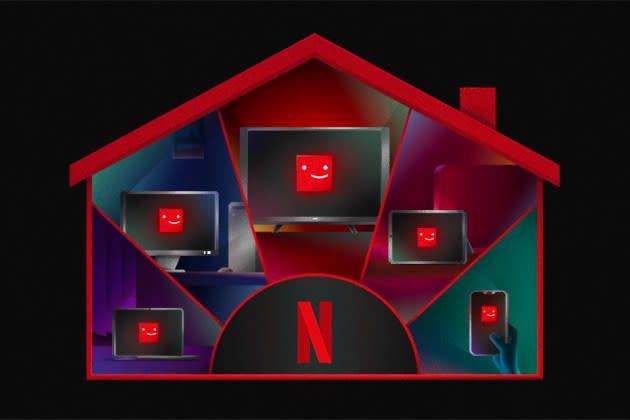Netflix’s New Pay-To-Share Password Setup: “We’re Seeing That It’s Working,” Co-CEO Greg Peters Says In Q2 Earnings Interview

Netflix Co-CEO Greg Peters said the initial verdict is in on paid password sharing — a risky but multi-billion-dollar initiative for the company — and it is positive.
“We’re seeing that it’s working,” the exec said, noting that the scheme, developed after a year-and-a-half of internal deliberation and development, has now been rolled out virtually worldwide.
More from Deadline
Revenue and subscription levels have increased across all global regions, Peters noted during the company’s second quarter earnings interview, indicating that customers have largely remained loyal during the shift. The key to keeping people in the fold, Peters said, has been balancing “user considerations” like the ability to preserve existing account profiles with “making sure Netflix is able to get reasonably paid when we deliver entertainment to someone.” The new proceeds, he said, will go toward “making the service better for everyone.”
Before the call went online, Netflix reported strong quarterly results. The headline number was the addition of 5.9 million subscribers, more than doubling Wall Street expectations.
Paid sharing, a more benign-sounding description of a crackdown on the practice of passing along logins for free, arrived in the U.S. in May after a preliminary launch in several other territories. It lets current subscribers add additional logged-in users to their plans for $8 a month Stateside. At that price point, the sharing plan is (in a not-accidental strategic move) a dollar higher than the cost of Basic with Ads, with that narrow spread helping stimulate sign-ups to the 8-month-old ad-supported plan.
The “business impacts” of paid sharing will “roll out over several quarters,” Peters said. “It’s not an overnight thing because, in part, the interventions are applied gradually and in part because some borrowers won’t immediately sign up for their own account.”
Initially, the viewers who have made the jump from borrower to subscriber are “well-qualified” subscribers, Peters said. “They are choosing plans and engaging at rates, have retention characteristics, that generally look like higher-tenure members. That’s good.”
Bank of America analyst Jessica Reif Ehrlich, who moderated the earnings interview, asked Peters about the different segments of the population that Netflix is trying to convert from borrowers to paying customers. “Some borrowers are using the service every day,” he replied. “Those folks are very likely to transfer to their own [paid] account very soon. And then some folks are less engaged, so it’s going to take us a little bit longer to convince them to move over” by leveraging compelling film and TV titles.
Peters declined to offer any specifics in response to Ehrlich’s queries about the breakdown of the subscriber numbers or components of the average revenue per subscriber stemming from the sharing rollout. As the company’s former chief product officer before his promotion to Co-CEO, Peters said the paid sharing initiative resembled “what we’ve generally done for a long period time, which is think about how we optimize the plan structure.”
Best of Deadline
Sign up for Deadline's Newsletter. For the latest news, follow us on Facebook, Twitter, and Instagram.

